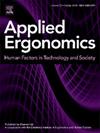飞行未知的天空:用综合AcciMap揭示不利的澳大利亚RPAS事件的促成因素网络。
IF 3.4
2区 工程技术
Q2 ENGINEERING, INDUSTRIAL
引用次数: 0
摘要
远程驾驶飞机系统(RPAS)是一项快速发展的技术,在更大的复杂航空系统中运行。因此,支持安全操作的保护性框架和风险控制仍在发展中。不良事件正在发生,但尚不清楚是什么系统性因素相互作用造成的。为了确定更广泛的澳大利亚RPAS网络中的漏洞,本研究使用AcciMap分析了澳大利亚运输安全局调查的一组不良RPAS事件。对澳大利亚RPAS事件的调查报告(n = 14)进行识别并使用AcciMap进行深入分析;针对每个不良事件构建单独的AcciMaps。然后将这些数据汇总起来,在澳大利亚的RPAS网络中创建一个促成因素的网络。研究结果显示,在AcciMap的6个级别中,有5个级别有232个单独的影响因素。然后使用预先存在的分类方案对促成因素进行编码,以确定31个促成因素主题。促成因素所占比例最高的是系统较低的业务和设备水平;这些因素包括设备、技术和资源;活动、工作和业务;遵守程序、违规和不安全行为。根据系统理论和之前使用AcciMap的分析,我们期望找到组织、监管和政府的促成因素,但这些因素在这个样本中是有限的。需要进一步的研究来探索整个社会技术系统中导致不良RPAS事件的因素。本文章由计算机程序翻译,如有差异,请以英文原文为准。
Flying uncharted skies: Unravelling the network of contributory factors to adverse Australian RPAS events with an aggregate AcciMap
Remotely Piloted Aircraft Systems (RPAS) are a rapidly expanding technology that operates within the larger complex aviation system. As a result, protective frameworks and risk controls for supporting safe operation are still developing. Adverse events are occurring, yet it is unclear what systemic factors interact to create them. To identify vulnerabilities in the broader Australian RPAS network, this study used AcciMap to analyse a set of adverse RPAS events investigated by the Australian Transport Safety Bureau. Investigation reports into RPAS incidents in Australia (n = 14) were identified and analysed in-depth with AcciMap; individual AcciMaps were constructed for each adverse event. The data was then aggregated to create a network of contributory factors across the RPAS network in Australia. The findings revealed 232 individual contributory factors across five of the six AcciMap levels. The contributory factors were then coded using a pre-existing classification scheme to identify 31 contributory factor themes. The highest proportion of contributory factors were at the lower operational and equipment levels of the system; these factors included Equipment, technology and resources; Activity, work and operations; and Compliance with procedures, violations and unsafe acts. According to systems theory and previous analyses using AcciMap, we would expect to find organisational, regulatory and government contributory factors, yet such factors were limited in this sample. Further research is required to explore the factors across the entire sociotechnical system that contribute to adverse RPAS events.
求助全文
通过发布文献求助,成功后即可免费获取论文全文。
去求助
来源期刊

Applied Ergonomics
工程技术-工程:工业
CiteScore
7.50
自引率
9.40%
发文量
248
审稿时长
53 days
期刊介绍:
Applied Ergonomics is aimed at ergonomists and all those interested in applying ergonomics/human factors in the design, planning and management of technical and social systems at work or leisure. Readership is truly international with subscribers in over 50 countries. Professionals for whom Applied Ergonomics is of interest include: ergonomists, designers, industrial engineers, health and safety specialists, systems engineers, design engineers, organizational psychologists, occupational health specialists and human-computer interaction specialists.
 求助内容:
求助内容: 应助结果提醒方式:
应助结果提醒方式:


